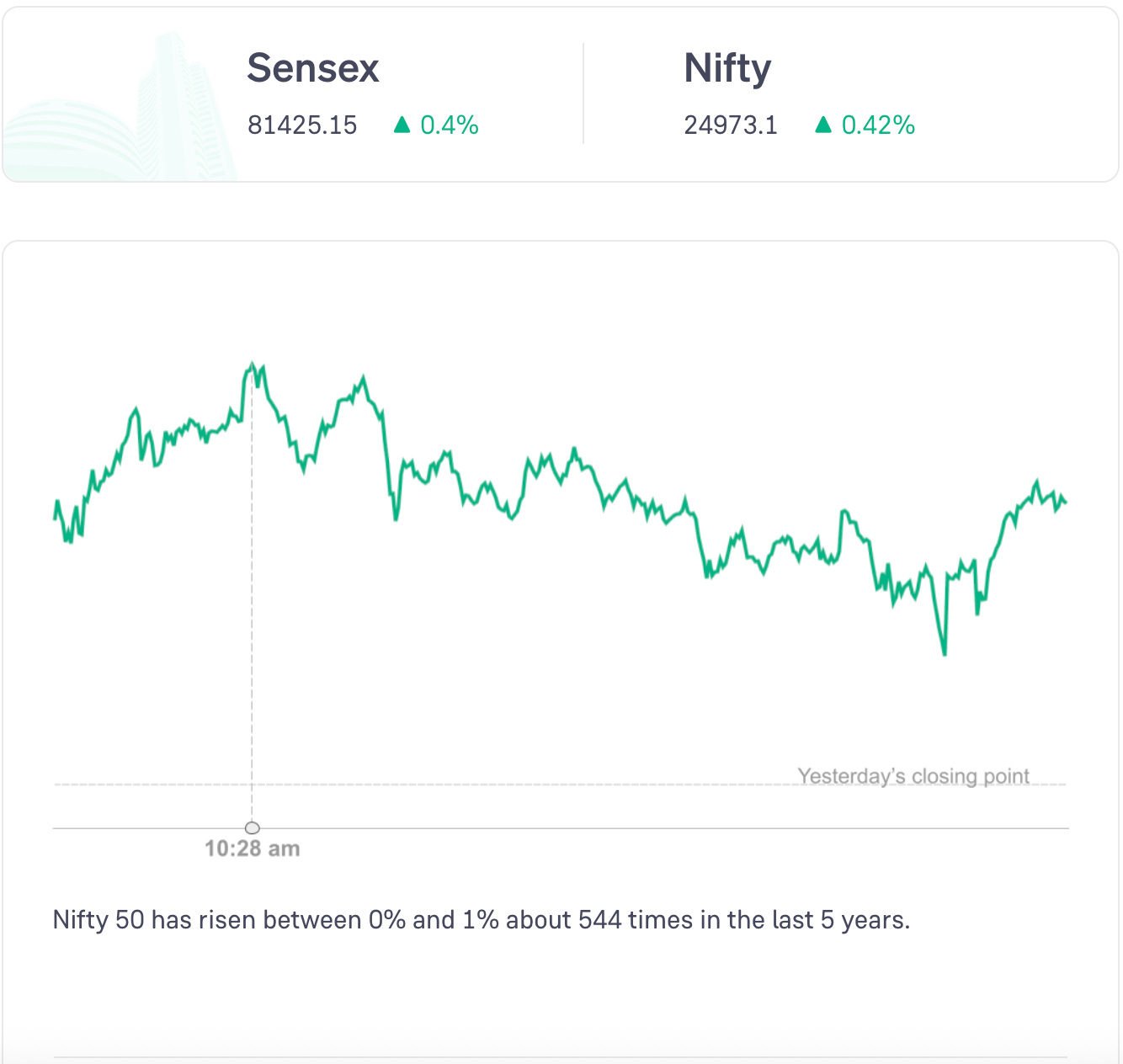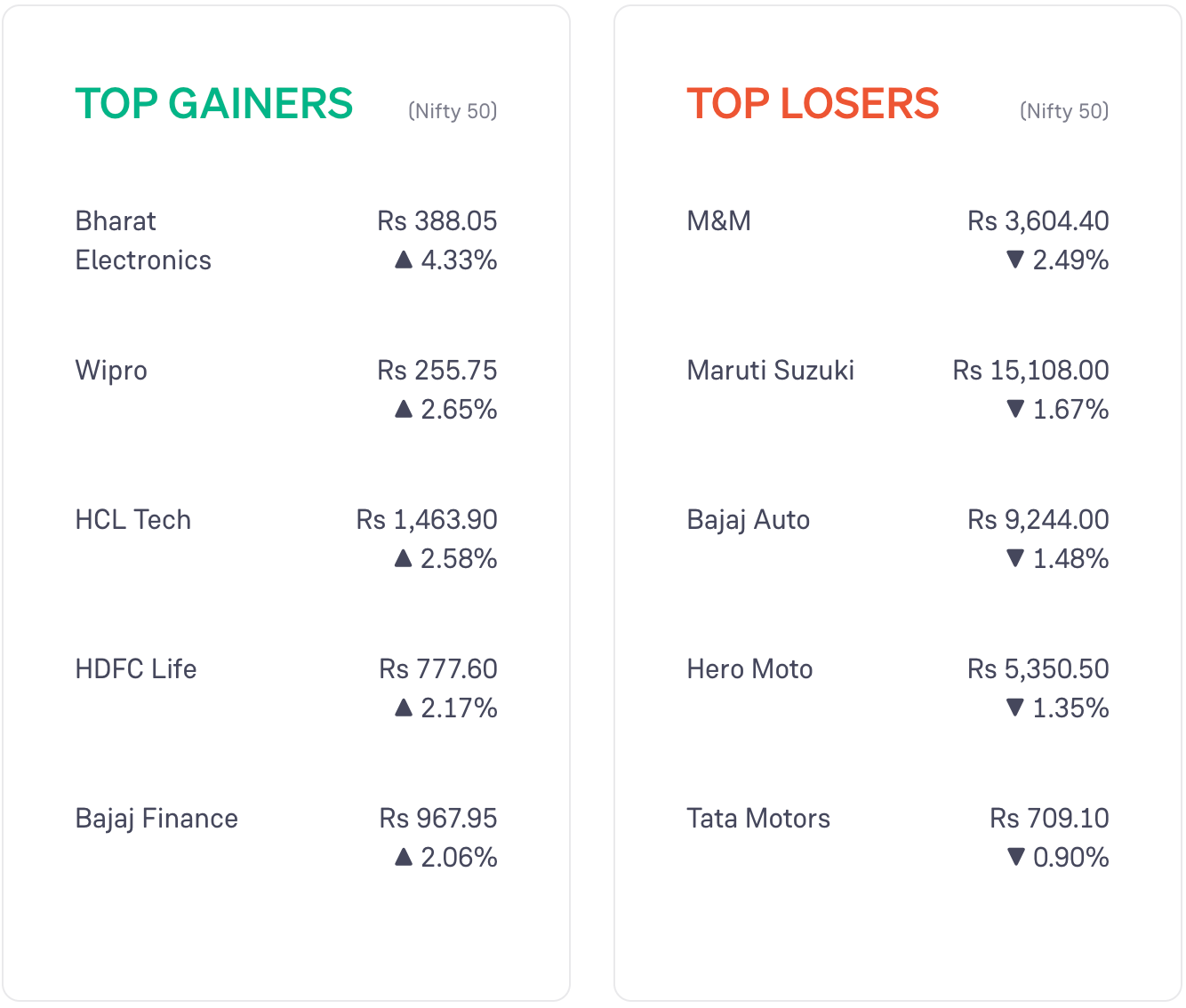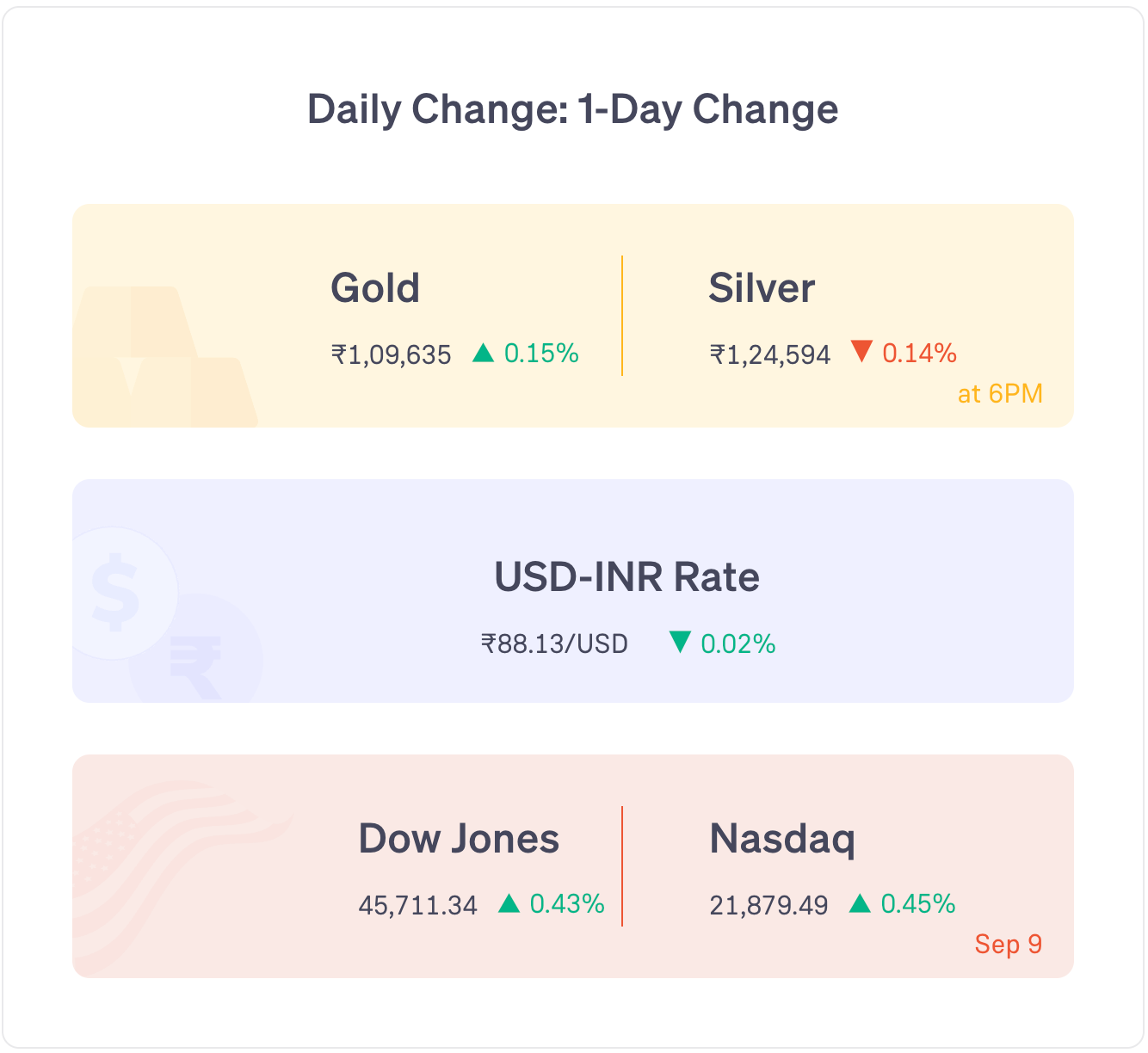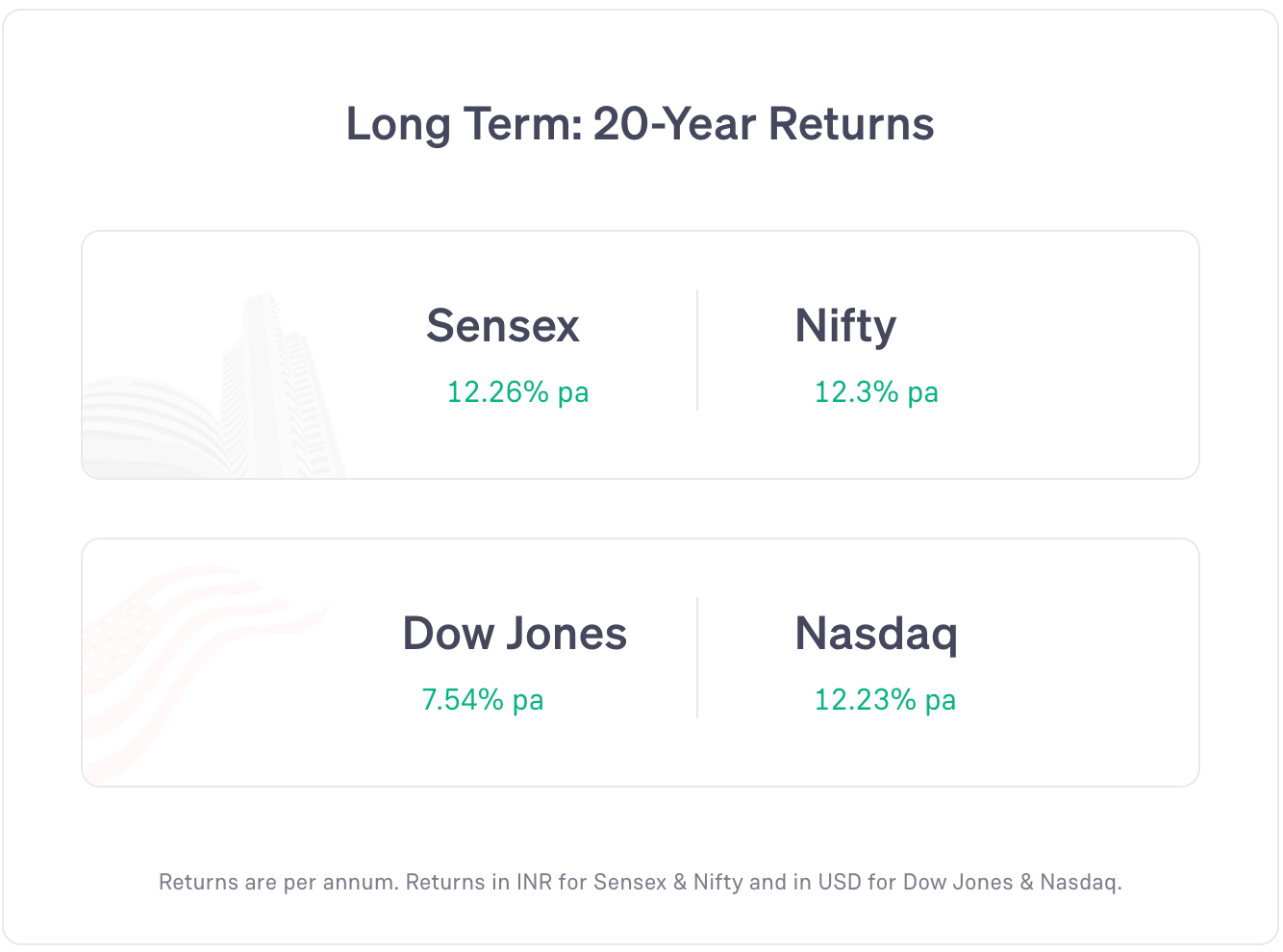Urban Company IPO opens, import alert on Sun Pharma's facility, & more - Daily Digest
Wednesday, 10 September 2025
Markets opened above yesterday’s closing point.
Nifty 50 opened higher and closed around the same range today. The positive sentiment may have been mainly driven by Trump’s positive comments on India-US trade talks.
IT stocks and PSU bank stocks rose the most today. Auto stocks and media stocks fell the most.
Global markets: US markets and Asian markets closed positively. European markets rose (as of 6 pm IST).
News
The government approved the doubling of the 177 km Bhagalpur-Dumka-Rampurhat railway line with a total cost of Rs 3,169 crore.
The government approved Rs 4,447 crore to build a 4-lane greenfield 82 km Mokama-Munger expressway section of the Buxar-Bhagalpur corridor.
China’s consumer inflation fell 0.4% year-on-year in August (vs no change in July).
Urban Company IPO has been subscribed 3.13 times. Retail subscription: 7 times. IPO is open till 12 Sept.
Stocks Updates
Muthoot Finance: invested Rs 200 crore into its subsidiary Muthoot Homefin by purchasing 26.67 crore equity shares.
Torrent Pharma: will acquire a 26% stake in Torrent Urja 27 Pvt Ltd (a step-down subsidiary) for Rs 7.92 crore to set up a hybrid power project in Gujarat.
Reliance: incorporated a new subsidiary, Reliance Intelligence Ltd.
Hindustan Aeronautics: signed a technology transfer agreement with ISRO, IN-SPACe, and NSIL to produce and commercialize the Small Satellite Launch Vehicle (SSLV) for the global market.
Tata Motors: along with its subsidiaries will acquire 26% stake in 2 Tata Power SPVs (TP Paarthav and TP Marigold) for Rs 39.2 crore for renewable energy and cutting carbon footprint.
Sun Pharma: the US FDA has classified the company's Halol facility as ‘Official Action Indicated’. The facility will be kept under import alert until it becomes compliant.
Samvardhan Motherson: has completed acquiring the remaining 25% stake in its two Turkey-based subsidiaries, making them fully owned.
Word of the Day
Fund of Funds (FoF)
It is a mutual fund that invests in other funds
This means instead of directly buying stocks or bonds, the fund puts money into different mutual funds and ETFs.
Your money gets spread across many funds and, indirectly, across many assets.
Example: if you put Rs 50,000 in an FoF, it might invest that money into different equity and debt funds, which together hold hundreds of securities.
6 Day Course
Theme: PMS
Day 3: Wednesday
In mutual funds, a flat expense ratio or management fees is charged.
Example: XYZ large cap fund has an expense ratio of 1% per annum.
This means the mutual fund will effectively deduct 1% of the total amount invested per annum.
In mutual funds, expense ratio is capped at max 2.25%.
In case of PMS, this expense ratio can be much higher and more complex.
Instead of a fixed charge, many PMS charge fees based on a profit-sharing basis.
So, they will take a portion of the profit generated.
Many PMS follow a hybrid approach where they take a flat fee and also have a profit sharing part.
This can make their effective management fee much higher than mutual funds.
In addition to this, PMS can also have an entry fee. Which means, there will be some charges incurred at the time of investment.
This entry fee does not exist in case of mutual funds.
Featured Question
Q. “I want to know how to determine an underperforming mutual fund.”
One of the easiest ways to do so is to compare its long term returns (5-year, 10-year returns, etc) against benchmark returns.
Every mutual fund is benchmarked.
If a mutual fund is consistently giving returns below the benchmark, it can be considered an underperforming mutual fund.
Example: most large cap mutual funds have Nifty 50 TRI index as their benchmark.
On the investment page, the name of the benchmark of the mutual fund is always mentioned.
Other than that, there is no fixed formula. You have to analyse subjectively.
All mutual funds go through ups and downs.
So a mutual funds’ returns going down is not always a bad sign.
One of the best ways to evaluate is by comparing the returns with other mutual funds of the same category and subcategory.
How do their returns compare?
If your mutual fund has been giving poor returns for very long periods of time (compared to other mutual funds in the same subcategory), then it may be a sign that that mutual fund is underperforming.
Did you like this edition?
Leave a feedback here!






What is XIRR & CAGR in mutual funds.
What is XIRR & CAGR in mutual funds.